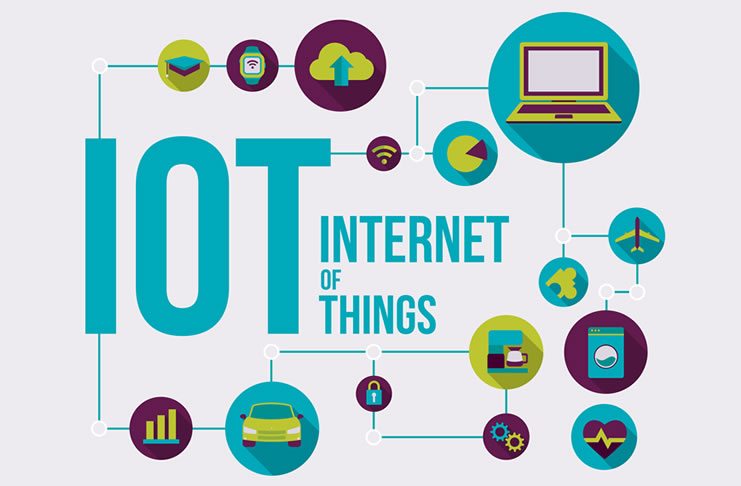Will AI Replace Teachers? Understanding the Role of AI in Education
The integration of AI in education is transforming how teaching and learning occur, offering tools like personalized tutoring and automated grading...
You must be logged in to the LATechNet portal to view additional resources.
4 min read
 Aria - LATechNet Team
:
May 2, 2025 6:02:57 AM
Aria - LATechNet Team
:
May 2, 2025 6:02:57 AM

Imagine a classroom where attendance is automatically recorded, interactive whiteboards respond to voice commands, and teachers instantly track student engagement—all thanks to the Internet of Things (IoT). Simply put, IoT refers to everyday objects connected to the internet, allowing them to send, receive, and share information seamlessly. From smart thermostats to wearable devices, IoT's reach is vast and continually expanding.
In recent years, IoT has rapidly found its way into our schools, transforming traditional classrooms into interactive, data-driven learning spaces. Teachers and students alike now embrace smart devices to foster engagement, improve classroom management, and personalize learning experiences.
Yet, as exciting as these advancements are, it's essential for educators like us to approach IoT thoughtfully. By carefully weighing both the promising benefits and potential risks, we can ensure we use these technologies wisely, safely, and effectively in our classrooms.
IoT technologies can transform classrooms into dynamic, personalized learning spaces. Imagine students interacting with lessons designed specifically for their learning styles and pace—this is possible with adaptive IoT devices. These devices collect data on each student's progress, providing tailored materials to help them learn better. IoT also supports gamification, turning lessons into interactive, game-like experiences that boost motivation and engagement. Real-time feedback through connected devices helps teachers quickly understand students' strengths and struggles, allowing them to adjust their methods immediately and keep students actively involved.
IoT devices make running a classroom simpler and more efficient. Automated attendance systems save valuable time by tracking student presence effortlessly. Smart classrooms with IoT-enabled energy management systems can lower electricity use, helping schools become more sustainable and eco-friendly. Furthermore, IoT technologies reduce administrative tasks, freeing educators from paperwork and enabling them to focus more on teaching and student interaction. By optimizing resource allocation, schools can create better learning environments for students while cutting costs and managing resources wisely (forbes.com).
While IoT devices offer exciting opportunities for classrooms, they also bring real security worries. In fact, over 60% of IoT devices have severe vulnerabilities, making them easy targets for hackers (iotbusinessnews.com). Imagine someone accessing sensitive student information without permission—this is a genuine risk schools face today. Educational institutions have become prime targets, experiencing around 131 cyberattacks weekly, which is double the global average (thefastmode.com). Protecting student privacy and data security is now more critical than ever before.
An equally big challenge is making sure educators feel comfortable using IoT technology. Surprisingly, only about 20% of teachers feel well-trained and prepared to integrate IoT devices into their classrooms (researchgate.net). Without proper training and ongoing support, teachers may find it hard to confidently use these tools, limiting their potential. Investing in professional development and continuous support is crucial to successfully adopting IoT technology in education.
Implementing IoT devices into classrooms comes with some real challenges, especially when it comes to connectivity and infrastructure. Many schools, especially in rural areas, struggle with limited internet access, making it tough to fully benefit from these technologies (iotforall.com). Additionally, upgrading school infrastructure to support IoT devices can get costly quickly. But there are strategies to help overcome these hurdles, such as partnering with local governments or communities, using offline-capable devices, and gradually upgrading infrastructure.
Another big consideration is the ethical and regulatory side of things. IoT devices collect lots of student data, raising questions about privacy and how information is handled. It's crucial for schools to adopt clear policies and transparent protocols. Educators and administrators should work together to build frameworks that respect students' rights and privacy, keeping everyone safe and confident in using technology in the classroom.
The classrooms of tomorrow are shaping up to be exciting places thanks to emerging IoT technologies. Imagine artificial intelligence (AI) working hand-in-hand with teachers to personalize lessons, or edge computing speeding up data processing right in the classroom. Advanced analytics will help educators better understand student performance, making learning more effective and fun. Experts predict the IoT market in education could reach a whopping $46.4 billion by 2032, highlighting just how important these technologies will become in schools (forbes.com).
To safely harness these advancements, schools must adopt strong cybersecurity frameworks to protect data and devices. Equally important are educator training programs to ensure teachers feel confident using IoT tools. Collaboration between tech companies, educators, and policymakers will be key, helping classrooms embrace innovation while keeping privacy and security at the forefront.
When bringing IoT devices into your classroom feels a bit overwhelming, LATechNet steps in to simplify the process. First, they offer expert consultation, crafting customized IoT deployment strategies that perfectly match your school's unique needs. Whether it's connectivity issues or infrastructure upgrades, LATechNet ensures your transition is smooth and hassle-free.
Worried about cybersecurity? LATechNet has you covered with thorough security audits and vulnerability checks. Their team continually monitors your IoT systems, quickly catching and responding to any threats, so you can feel safe and confident.
But they don't stop there—LATechNet also provides hands-on training workshops that help you and your fellow educators master new IoT technologies. Plus, their ongoing technical support means you're never left alone.
Finally, LATechNet guides you through the ethical and regulatory maze, helping you comply with privacy laws and build clear, reliable IoT policies that fit your school's values.
As we've seen, IoT devices hold exciting possibilities for transforming our classrooms, promising engaging, personalized education experiences for our students. From interactive whiteboards to smart attendance systems, these tools can truly revolutionize how we teach and learn. Yet, we must also be cautious and mindful of the risks involved, like privacy and security concerns, ensuring we protect both ourselves and our students.
The key lies in informed, thoughtful implementation—carefully choosing and integrating IoT devices into classrooms with strategies designed to maximize benefits while minimizing risks. Organizations like LATechNet play a crucial role here, providing educators with valuable guidance and resources. They help us navigate the complexities of IoT safely and effectively, so we can confidently harness its full educational potential. With the right balance and support, IoT can genuinely enhance learning for everyone involved.

The integration of AI in education is transforming how teaching and learning occur, offering tools like personalized tutoring and automated grading...

The emergence of 5G technology promises to revolutionize education by providing faster internet speeds, enabling seamless online learning and...

Artificial Intelligence is significantly transforming the education sector by personalizing learning experiences and enhancing educator efficiency....